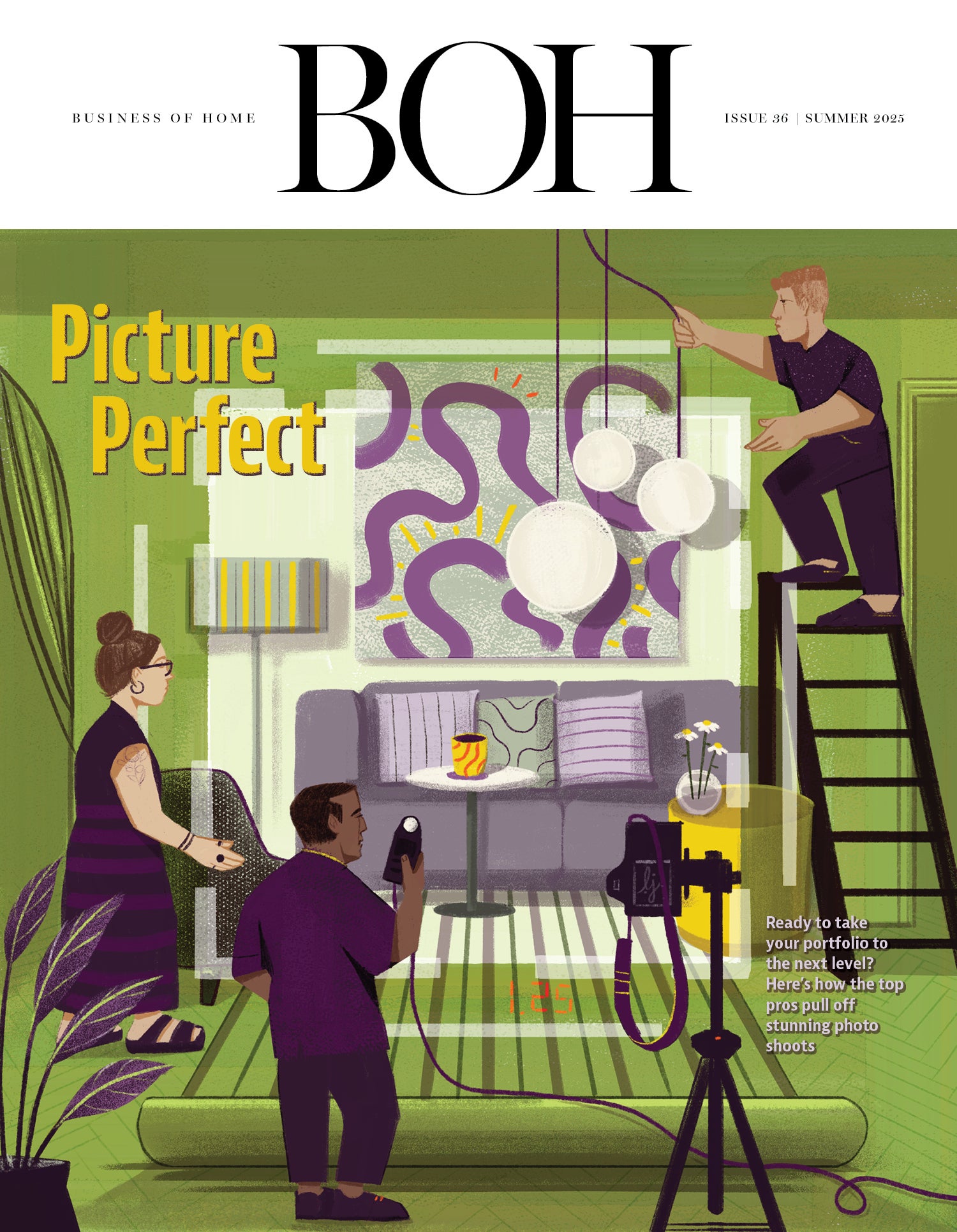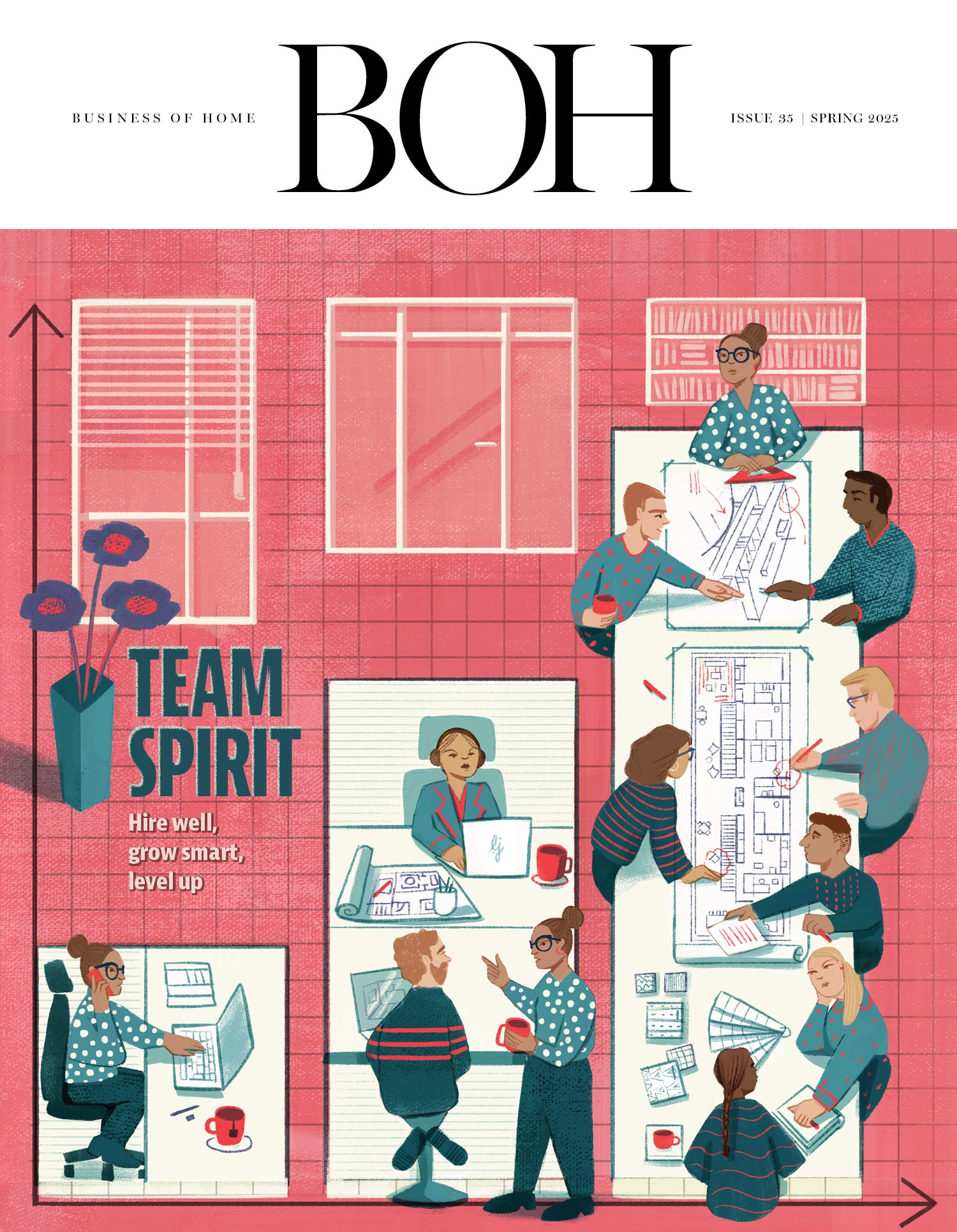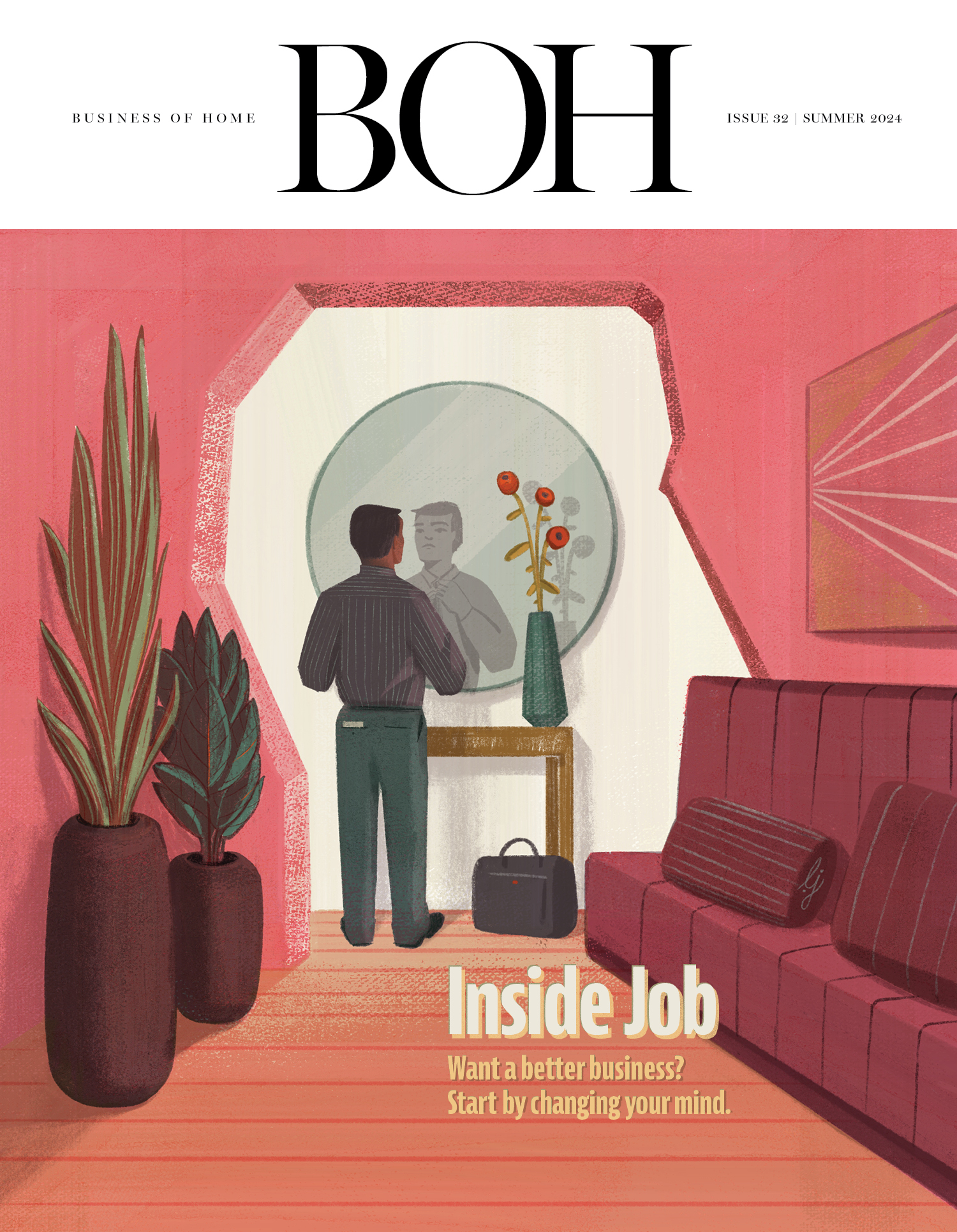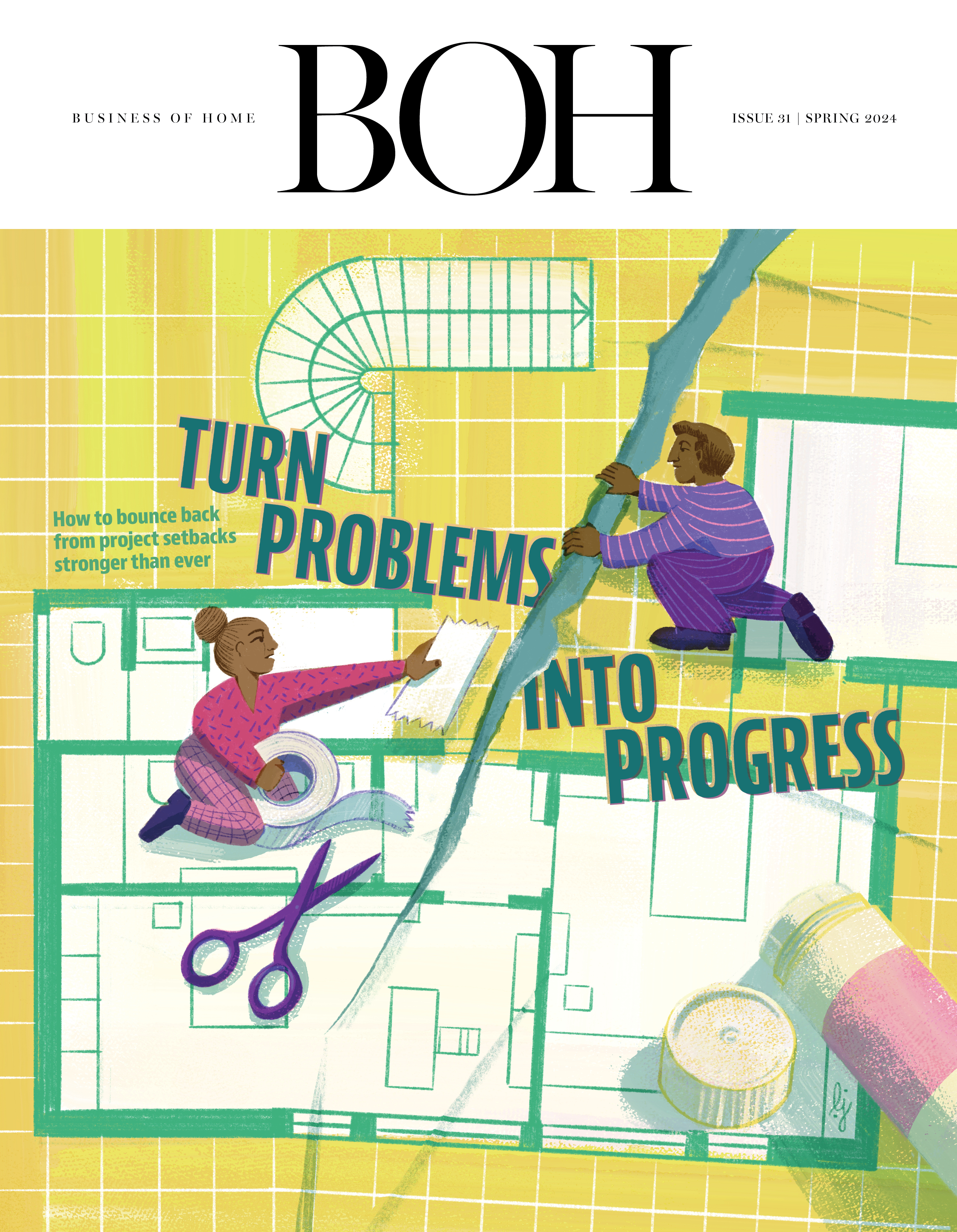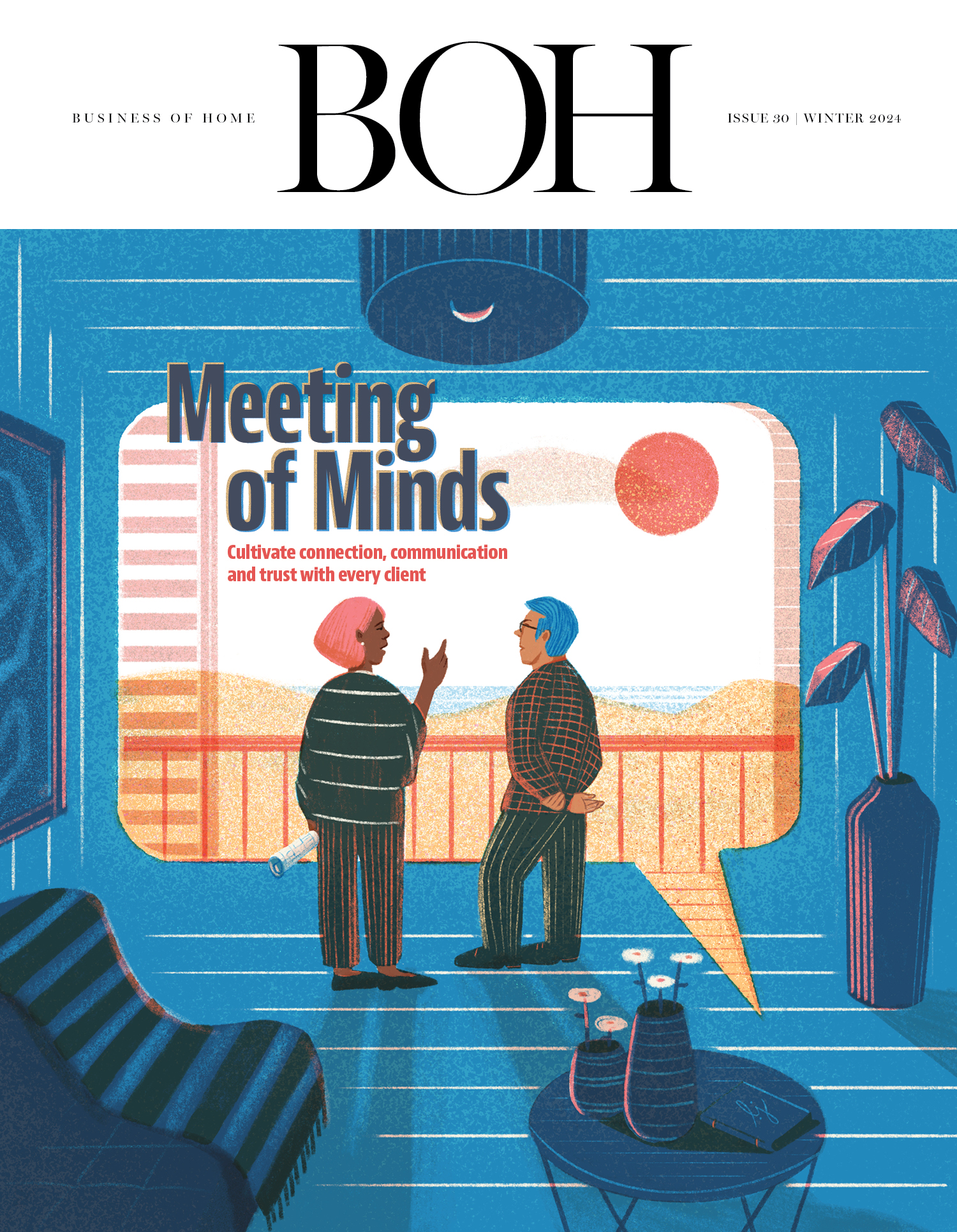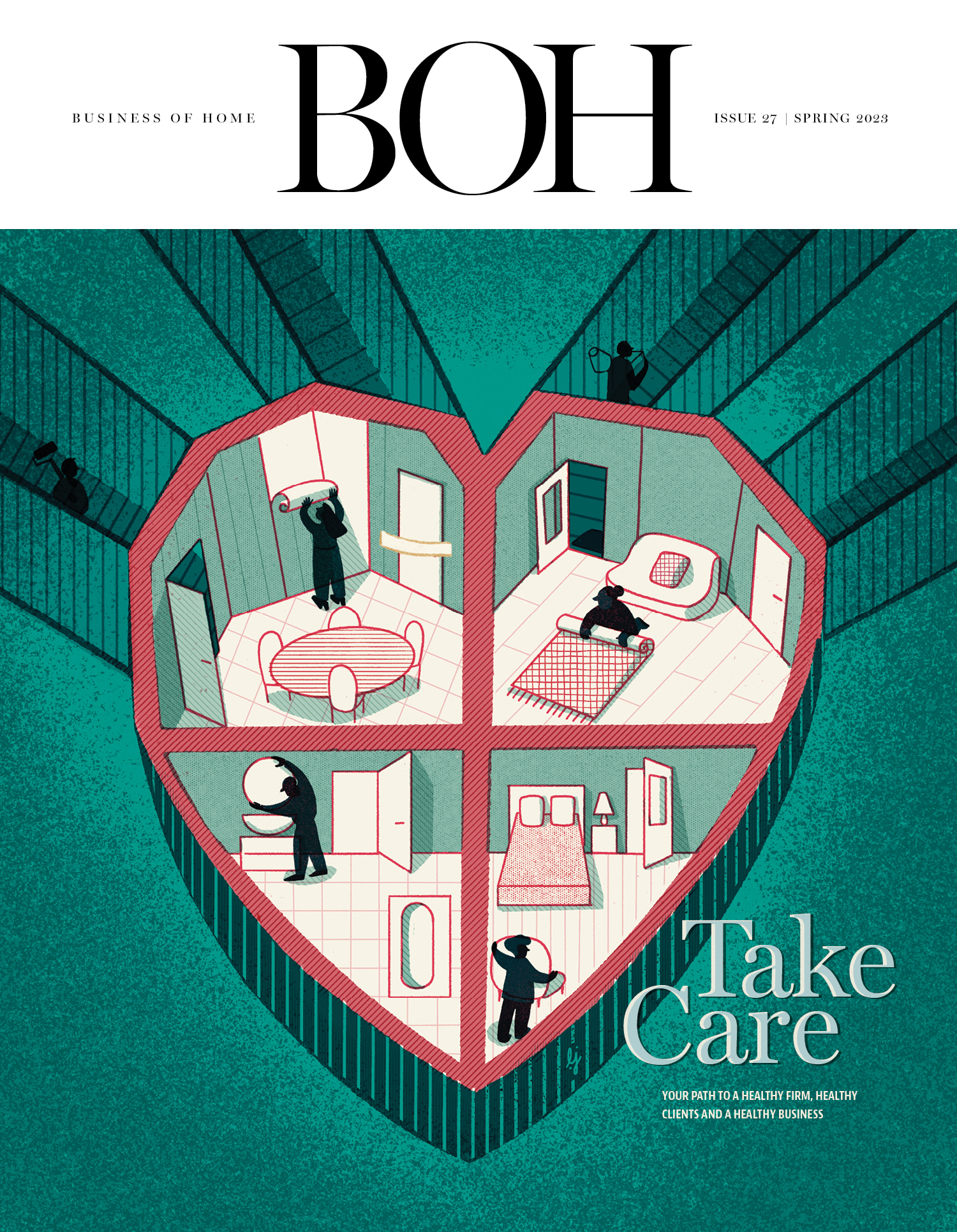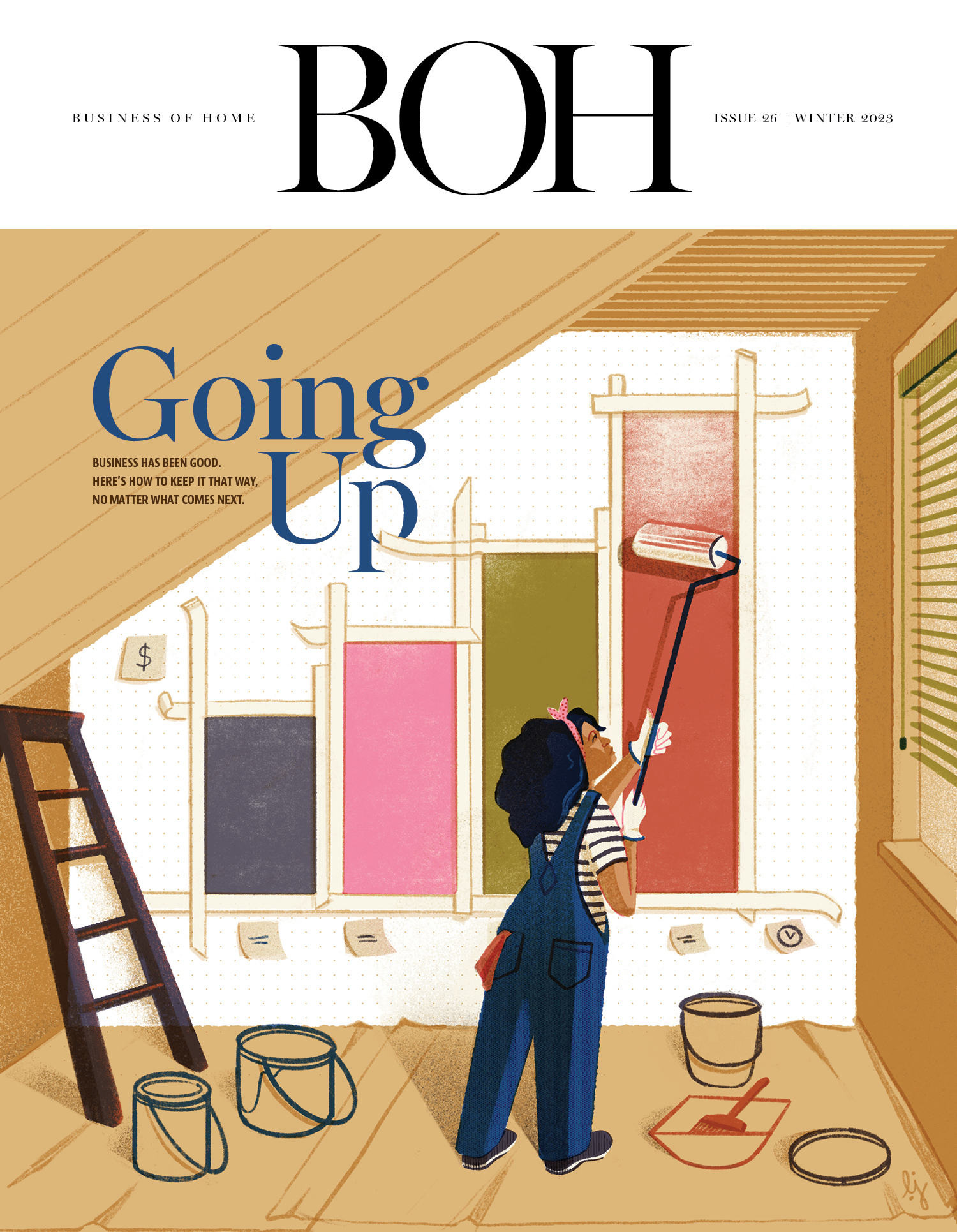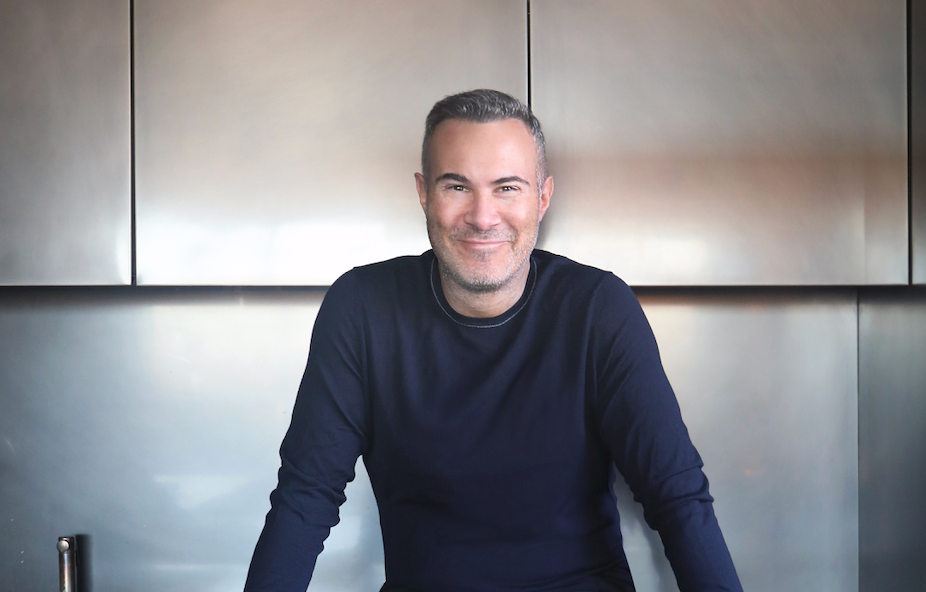It would have made sense if Adam Hunter went directly into the design field at a young age—after all, he was rearranging his bedroom by the age of 5 (and his neighbor in Winnetka, Illinois, was none other than Holly Hunt). Instead, he went into the family business: Broadway.
“My mom was also on Broadway. I was very lucky to do it very early. I graduated from University of Michigan at 21 and I was in Les Misérables a couple months later,” Hunter tells host Kaitlin Petersen on the latest episode of Trade Tales. “But when I was on Broadway, I would be the guy flea-marketing with Patti LuPone and Julie Andrews—it was always part of my thing.”
After spending a decade onstage, Hunter relocated to Los Angeles for a role in a TV series. Once he got there, a writer’s strike promptly led to the show’s cancellation, leaving him in need of a career pivot. When the designer who was hired to redesign the clinic of Kate Somerville (“skin guru to the stars here in Melrose Place”) canceled at the last minute, Hunter and a friend—who served as Somerville’s makeup artist at the time—managed to snag the opportunity. Before long, their work made a splash among the skin care expert’s local clientele, and suddenly Hunter had a growing pipeline of design projects.
By 2008, he had officially launched his eponymous firm. In the years since, he’s managed to conquer the notoriously daunting L.A. market, utilizing the communication skills he acquired onstage to navigate a wide range of clients—from affluent Brentwood families to celebrities with sky-high standards. As he readies himself for the next stage of his career, he’s looking beyond the glitz and glamour and seeing his place in the community and his firm’s mission in a new light, especially in the wake of the wildfires that ravaged Los Angeles earlier this year.
Elsewhere in the episode, he talks about the hire who brought consistency to his firm’s processes, how he developed boundaries to protect his professional relationships, and how a shift toward deeper relationships helped him find the right size for his firm.
Crucial insight: Today, Hunter’s firm employs seven people—though at the height of the pandemic, it took the form of a 17-person team. Finding the right size, he says, required some trial and error, along with a closer examination of the role he wanted to play in each project. “I had learned how to run a business pretty well; I had not learned how to scale a business. That is a separate skill,” he says. “I know designers who are brilliant furniture purists, and I respect and I love those blue-chip people—it’s not me. I am more in it for the relationship, the magic, and making each person feel elevated in their homes.”
Key quote: “We need to be together. We need to feel things and be tactile and talk to each other and have that bounce-back and have the happy accident moment where [the client] says something and I say something and it turns into the right textile—there’s something that happens in the room that reminds me very much of being in the theater.”
This episode was sponsored by Lutron and Serena & Lily. If you like what you hear, subscribe on Apple Podcasts or Spotify.




